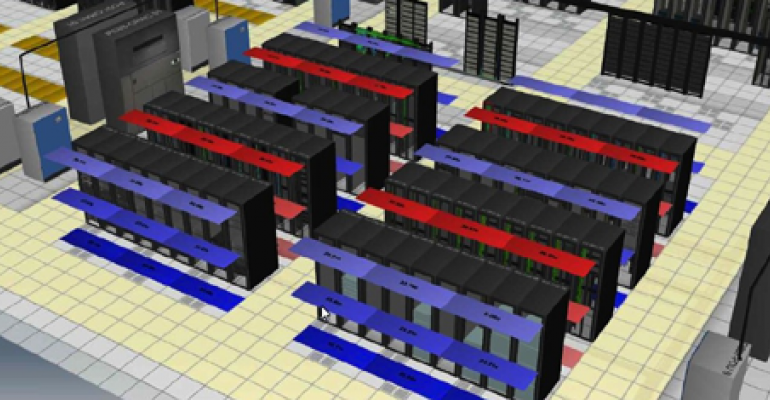DCIM providers continue to flesh out their offerings, adding a slew of functionality, integrations and capabilities. iTRACS, which was recently acquired by CommScope, released the latest iteration of its DCIM software. Several providers have been integrating RF Code, with RFID capabilities in DCIM in high demand. Nlyte has released its own barcode reader, built with insights derived from thousands of man-hours of auditing experience.
These are just some of the recent changes across the DCIM landscape. Here's a look:
iTRACS Adds Integrations, Remote Management
iTRACS was acquired by CommScope and has been adding functionality ever since. Earlier this month, CommScope announced three integrations and a slew of other new functionality. Converged Physical Infrastructure Management (CPIM) is now at version 2.8. New to CPIM is purpose build browser and iPad user interfaces, deep integrations with VMWare, RF Code and HP. The offering leverages the DCIM Open Exchange Framework and the new myDCIM role-based user experience.
“CPIM 2.8 provides data center owners and operators with a new level of decision-making in the areas key to their business success,” said George Brooks, senior vice president of Enterprise Product & Market Management, CommScope. “From capacity planning and change management to virtualization and asset lifecycle management, iTRACS helps customers optimize the data center as a performance-based resource. With the myDCIM role-based user experience, customers will be able to tailor their interfaces to their exact needs for even greater speed, convenience, and efficiency.”
CPIM 2.8 has boosted asset management, performance optimization, change management and mobility capabilities. The CPIM browser interface and iPad mobile app means infrastructure can be viewed and managed anywhere. These interfaces join the existing CPIM Windows interface.
The three integrations are also key. The VMWare integration boosts capabilities around visualizing and analyzing the relationships between physical assets and logical hosts. This integration shows the larger trend of DCIM providers working on improving DCIM capabilities when it comes to virtual assets.
The HP System Insight Manager integration adds features around asset discovery and operational data collection to allow CPIM users to understand, manage, and improve the energy usage and efficiency of their assets. It offers a “single pane” view to bring together multiple vendor data sets in iTRACS’ seamless management interface.
The RF Code integration allows CPIM users to collect, manage and analyze asset location information and environmental information. There have been several RF Code integrations as of late, as RFID is becoming integral in proper DCIM.
Larger Trend: RF Code integration
Real time asset management company RF Code has had several integrations as of late. Server Tech announced an integration with RF Code last month, enabling its SPM power monitoring solution to take full advantage of environmental data captured by RF Code sensors and then provide a consolidated view of the environmental/power information.
In May, CA Technologies announced it was integrating RF Code technology with CA DCIM, helping customers gain greater business returns on their investments in data center infrastructure.
The ability to integrate RFID sensor technology into a DCIM solution is becoming a standard, much-needed feature. RF Code integrations make monitoring and managing the physical assets of a data center much easier.
Nlyte Adds Barcode Reader
Nlyte recently announced a Barcode Reader for DCIM. The company set out to create a barcode reader that builds extreme discipline surrounding workflows and change orders to keep the Nlyte Content Repository up to date, accurately reflecting the data center at every point in time.
The company decided against existing bar code systems citing lack of integration into any other management systems. The company spent time building a user-friendly experience. Barcode Reader enables the portable auditing of cabinets, IT devices and their network and power connection, greatly reducing the time to install equipment, capturing changes and improving data accuracy and reliability – at the location of change itself.
It uses any combination of inexpensive handheld barcode scanner in conjunction with a tablet. It allows a user to scan an asset tag, confirm its information or add it to the Nlyte Central Repository database all online (or with the ability to synch offline).
DCIM Market Still a Scattered Landscape
The DCIM market is expected to grow significantly, despite a very full competitive landscape. There remains some confusion among customers when it comes to differentiating the offerings. Holding true to predictions, integrations to tackle more of what goes on in the data center, consolidation and acquisition, and a push towards real-time data capabilities are all driving the market. Expect more integrations and more functionality coming out at a rapid clip as providers try to break away from the pack in a big way.





